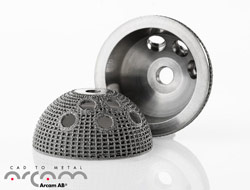![Silicon Valley [Source: Patrick Nouhailler via Flickr]](https://fabbaloo.com/wp-content/uploads/2020/05/Silicon-Valley_img_5eb067ec38e51.png)
Silicon Valley [Source: Patrick Nouhailler via Flickr]
Charles Goulding of R&D Tax Savers examines hiring trends in a new reality.
The Financial Times recently published a surprising article indicating that Silicon Valley tech companies are essentially maintaining hiring levels. California-based tech companies were looking to fill 15,852 jobs in the second week of March 2020.
As a result of the COVID-19 pandemic and the sudden shift to many businesses operating remotely from home, there has been a huge increase in Slack and Microsoft sales. Remote working was already experiencing steady growth, and one analyst feels that the crisis has accelerated that trend by seven years.
This pandemic represents a tipping point for brick and mortar retailers that need to quickly shift to e-commerce, as well as for restaurants that are now forced to convert operations from sit down to takeout and home delivery.
A new generation of collaborative work tools, video conferencing and group messaging software is revolutionizing the workplace concept. As this global crisis continues, large companies are shipping thousands of computers and monitors to their stay-at-home workers, and entrepreneurs of all sizes are making the same purchases. With this new level of remote workplace infrastructure and enhanced functionality, there is no going back to the old way of working.
The 3D printing industry needs to follow these developments closely and take advantage of the benefits.
Traditionally, the 3D printing industry has relied on exposure through tradeshows, but now more than ever it is possible to bring the tradeshow to the customer at their workplace, both in and out of the home. During a blackout period where tradeshows are suspended and face-to-face meetings are curtailed, a portion of 3D printing marketing budgets should be allocated to putting the new, necessary workplace technologies in place.
Federal and state research and development tax credits are available for companies facing the workplace technology conversion process.
The Research & Development Tax Credit
Enacted in 1981, the now permanent Federal Research and Development (R&D) Tax Credit allows a credit that typically ranges from 4%-7% of eligible spending for new and improved products and processes. Qualified research must meet the following four criteria:
-
Must be technological in nature
-
Must be a component of the taxpayer’s business
-
Must represent R&D in the experimental sense and generally includes all such costs related to the development or improvement of a product or process
-
Must eliminate uncertainty through a process of experimentation that considers one or more alternatives
Eligible costs include US employee wages, cost of supplies consumed in the R&D process, cost of pre-production testing, US contract research expenses, and certain costs associated with developing a patent.
On December 18, 2015, President Obama signed the PATH Act, making the R&D Tax Credit permanent. Beginning in 2016, the R&D credit can be used to offset Alternative Minimum tax for companies with revenue below $50MM and, startup businesses can obtain up to $250,000 per year in payroll tax cash rebates.
Conclusion
The post-crisis workplace is never going to be the same. The 3D printing industry needs to embrace that reality and adjust accordingly.

